You May Be Overlooking This Building on Campus. You Shouldn’t.
- News & Events
- News
- You May Be Overlooking This Building on Campus. You Shouldn’t.
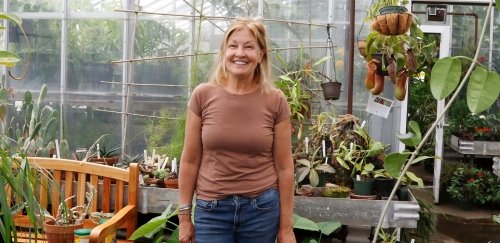
RIC’s greenhouse has life forms you wouldn’t believe. “Come in and explore,” says Greenhouse Manager Pam Hill.
That little white building you’ve passed a million times on your way to the Quad is the Leslie Cameron Greenhouse. And it isn’t your typical greenhouse. Some of the most diverse species of plants are grown here.
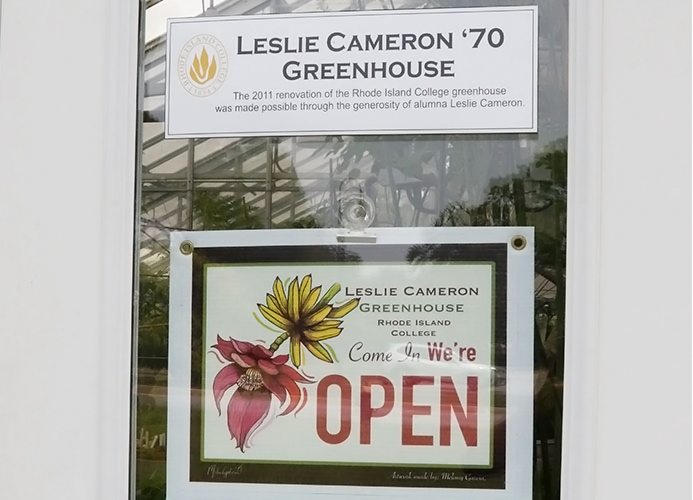
Take the corpse flower or Titam arum. According to Professor of Biology Eric Roberts, a botany specialist, “The name ‘corpse flower’ comes from the odor it produces [the smell is a combination of decomposing meat, feces and rotting fish], which is designed to attract flies. The flies unwittingly act as pollinators that help the plant produce seed.” You won’t find this plant in local greenhouses. It’s a native of Indonesia. But you’ll find it in RIC’s greenhouse.
Constructed in 1971 and then renovated in 2011 by funding from alumna Leslie Cameron ’70, who the greenhouse is named after, RIC’s greenhouse was created to propagate plants for the Department of Biology for their botany studies.
“It’s one thing to have our students find these plants in books or online, it’s another for them to handle the real plant and actually work with them,” says Roberts. “Having a diversity of plants – whether it’s for teaching or for visitors to see – leaves you a bit amazed. We try to feature plants that represent both nature’s diversity and interesting or unusual forms.”
For example, in the first of the three greenhouse rooms is a carnivorous plant called Nepenthes (also known as a tropical pitcher plant). Shaped like a pitcher, this plant secretes a sticky nectar that attracts insects (and occasionally other small animals), which the plant kills and eats.
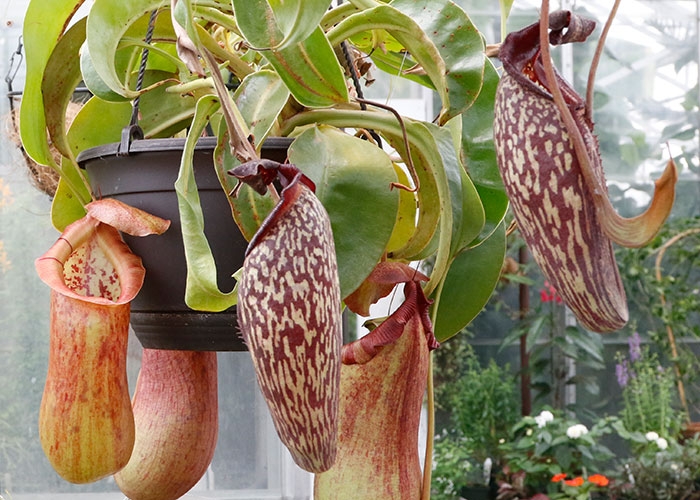
There’s also an unusual succulent in this room called Mother of Thousands, which gives birth to offspring (little plantlets) that grow all along the edges of her leaves.
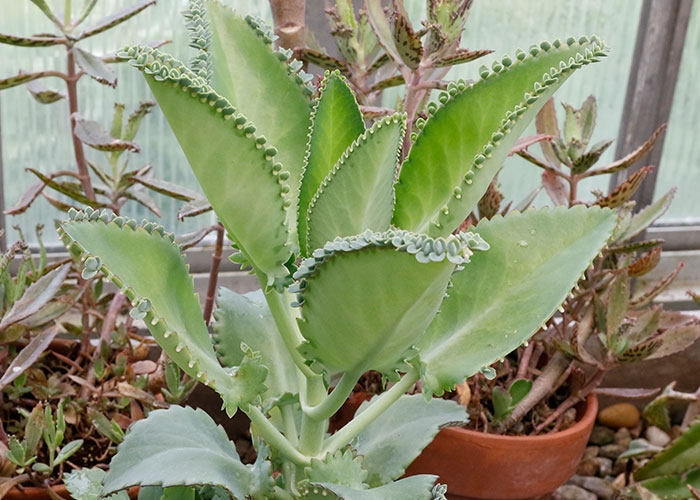
The tallest plant in this room is the papyrus, a native of Africa that was used by the Egyptians to make scrolls.
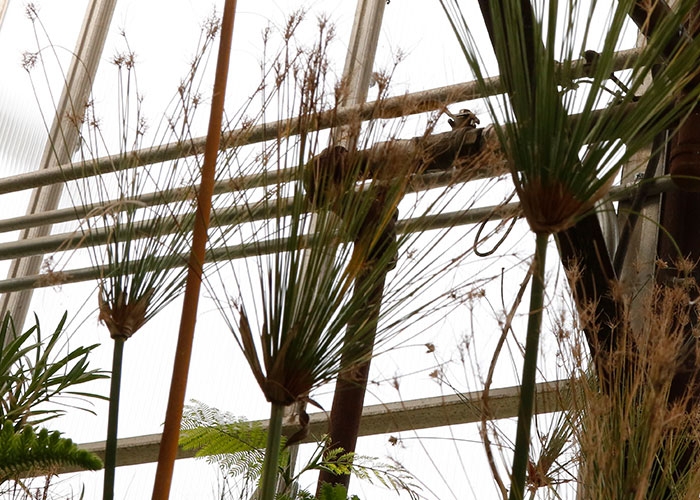
The second room in the greenhouse is for more high-humidity plants like mosses and ferns.
“What’s interesting about mosses and ferns is that they are seedless,” says Roberts. “All trees and flowers make seeds to reproduce. But mosses and ferns can’t produce seeds, yet they need to reproduce. So, what they do is produce microscopic spores. If the spore drops to the ground in the right place and under the right conditions, it will produce a heart-shaped plant invisible to the eye that produces sperm and egg cells. When the sperm and egg cells unite, they grow into a fern.”
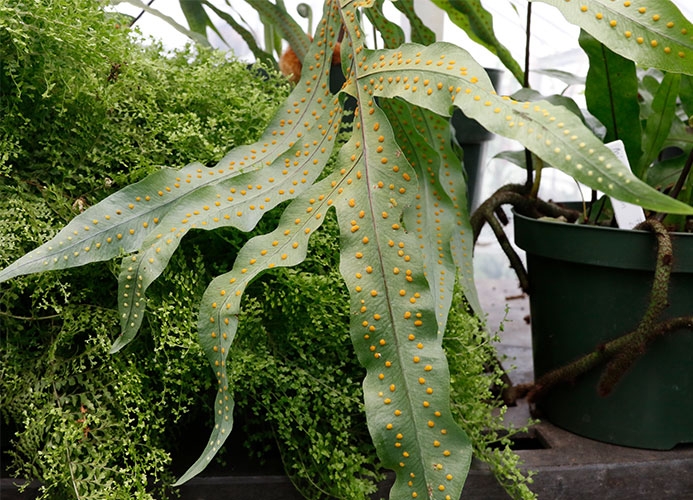
The third room is like stepping into a sauna. Here, the temperature is set at a muggy 90 degrees to accommodate tropical plants. The elephant in this room is a giant, 12-foot-tall banana plant. Typically grown in the tropical regions of Central and South America, Africa and Southeast Asia, this nonnative is thriving in RIC’s greenhouse. Its wide leaves reach toward the glass ceiling and its branches yield tight green bundles of fruit.
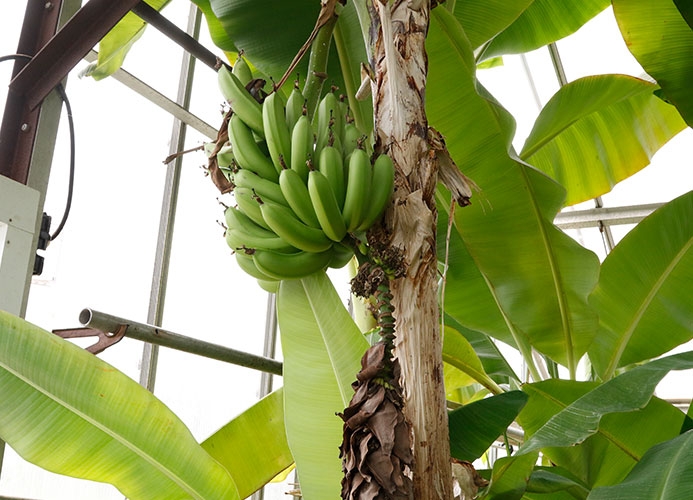
All of these rare and exotic plants are loving their life in the Leslie Cameron Greenhouse because of the caretaker of this conservatory – Pam Hill.
A certified horticulturist, Hill has been managing the greenhouse on a part-time basis for the last seven years. “However, I couldn’t have done it without the assistance of my work-study students,” she says. This summer, she is supervising three of them.
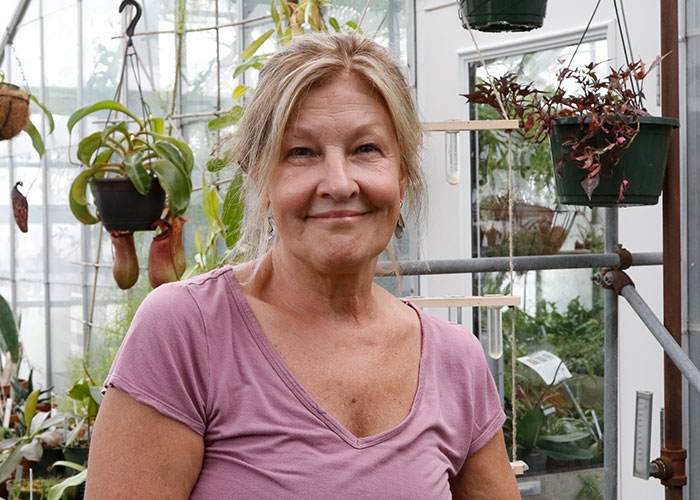
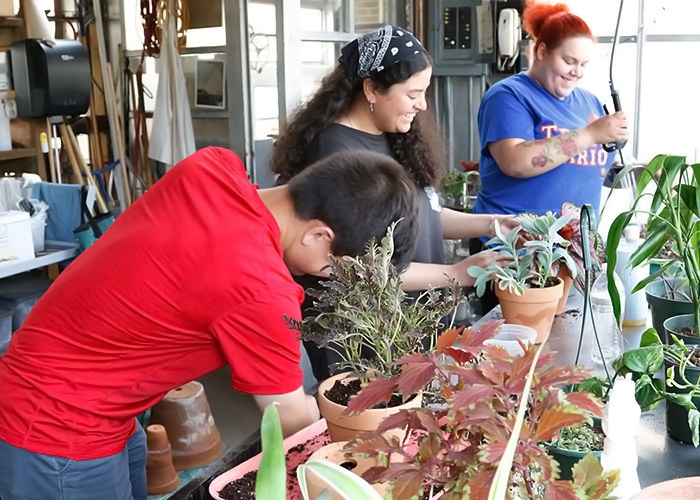
Senior Melany Garcia has been working at the greenhouse for four years. She says, “I fell in love with the greenhouse during a campus tour as an incoming student. I thought it was the most beautiful part of the entire campus. After the tour ended, I came back and talked to Pam about working here. Now, as an art major, all my paintings are based on the plants here, and I’ve designed metal earrings based on the ginkgo leaf.”
Hill notes, “We’ve had art students come in to draw the plants, we’ve had digital media students use the plants in their poster designs, we’ve had the Environmental Club hold events here and local schools bring children to the greenhouse on field trips.”
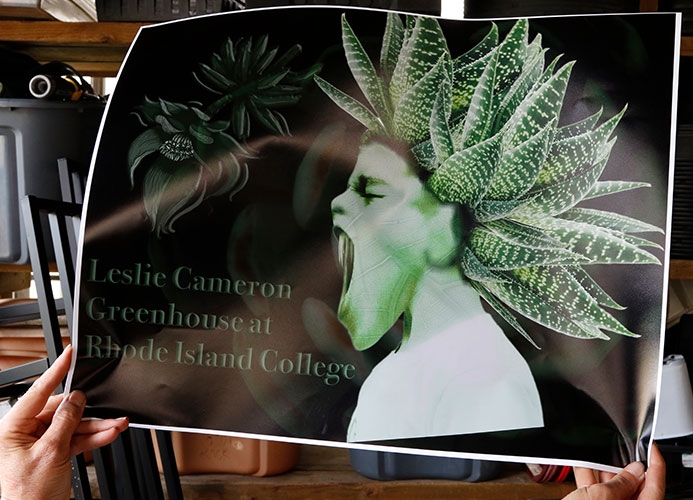
Hill was even featured in a film by a RIC student. “The film is about a carnivorous plant who lures a young woman into its ‘pitcher’ and holds her captive,” Hill says. “My role in the film was to talk to the plant and praise its many characteristics to get it to release its captive.”
Though Hill didn’t win an Academy Award for her role, she could easily win a prize for the role she’s had in keeping this greenhouse a verdant oasis.
Hill urges the entire campus community and off-campus visitors to “come in and explore. What better way to spend your lunch hour,” she says. “There are no set hours of operation for the greenhouse, but someone is here daily. If you see the sign flipped to ‘Open,’ please do come in.”
For more information, contact Pam Hill at phill@ric.edu.
